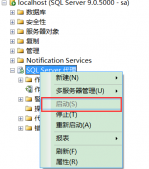使用自定义参数方式实现 superset 实现sql动态查询
1、启用参数:config.py 设置"enable_template_processing": true
2、当前superset v1.2版本支持的参数包括:
{{ current_username() }} 当前登录用户名
{{ current_username(add_to_cache_keys=false) }} 不从缓存中获取登录用户名,默认从缓存获取
{{ current_user_id()}} 当前登录用户id
{{ current_user_id(add_to_cache_keys=false) }} 不从缓存中获取登录用户id,默认从缓存获取
{{ url_param('custom_variable') }} url 参数,比如127.0.0.1:8001\dashboard?abc=123,参数就是{{ url_param('abc') }} 结果就是123
{{ cache_key_wrapper() }} 还没有弄明白啥用
{{ filter_values("字段名") }} 获取dashboard filter_box组件对某个字段的筛选结果
{{ from_dttm }} 获取dashboard filter_box组件日期筛选的开始时间
{{ to_dttm }} 获取dashboard filter_box组件日期筛选的结束时间
{{ get_filters() }} 暂时没有弄明白
除此之外,还可以自定义参数,自定义参数方法:
①修改superset/jinja_context.py文件,修改三个地方:
|
1
2
3
4
5
6
7
8
9
10
|
regex = re.compile( r"\{\{.*(" r"current_user_id\(.*\)|" r"current_username\(.*\)|" r"current_userroles\(.*\)|" r"isadmin\(.*\)|" r"cache_key_wrapper\(.*\)|" r"url_param\(.*\)" r").*\}\}" ) |
↑↑↑↑注意此处的 current_userroles 和 isadmin 是我自定义的,源文件没有
|
1
2
3
4
5
6
7
8
9
10
11
12
13
14
15
16
17
18
19
20
21
22
23
24
25
26
27
28
29
30
31
32
33
34
35
36
37
38
39
40
41
42
43
44
45
46
47
48
49
50
51
52
53
54
55
56
57
|
def current_user_id(self, add_to_cache_keys: bool = true) -> optional[int]: """ return the user id of the user who is currently logged in. :param add_to_cache_keys: whether the value should be included in the cache key :returns: the user id """ if hasattr(g, "user") and g.user: if add_to_cache_keys: self.cache_key_wrapper(g.user.get_id()) return g.user.get_id() return none def current_username(self, add_to_cache_keys: bool = true) -> optional[str]: """ return the username of the user who is currently logged in. :param add_to_cache_keys: whether the value should be included in the cache key :returns: the username """ if g.user and hasattr(g.user, "username"): if add_to_cache_keys: self.cache_key_wrapper(g.user.username) return g.user.username return none def current_userroles(self, add_to_cache_keys: bool = true) -> optional[str]: """ return the roles of the user who is currently logged in. :param add_to_cache_keys: whether the value should be included in the cache key :returns: the userroles """ if g.user and hasattr(g.user, "roles"): if add_to_cache_keys: user_roles = "/".join([role.name.lower() for role in list(g.user.roles)]) self.cache_key_wrapper(user_roles) print(user_roles) return user_roles """admin in user_roles""" return none def isadmin(self, add_to_cache_keys: bool = true) -> optional[str]: """ return the roles of the user who is currently logged in. :param add_to_cache_keys: whether the value should be included in the cache key :returns: the userroles """ if g.user and hasattr(g.user, "roles"): if add_to_cache_keys: user_roles = [role.name.lower() for role in list(g.user.roles)] return "admin" in user_roles return none |
↑↑↑↑仿照系统自带的 current_username 编造自己的函数,我写了current_userroles 和 isadmin
|
1
2
3
4
5
6
7
8
9
10
11
12
13
14
15
|
class jinjatemplateprocessor(basetemplateprocessor): def set_context(self, **kwargs: any) -> none: super().set_context(**kwargs) extra_cache = extracache(self._extra_cache_keys) self._context.update( { "url_param": partial(safe_proxy, extra_cache.url_param), "current_user_id": partial(safe_proxy, extra_cache.current_user_id), "current_username": partial(safe_proxy, extra_cache.current_username), "current_userroles": partial(safe_proxy, extra_cache.current_userroles), "isadmin": partial(safe_proxy, extra_cache.isadmin), "cache_key_wrapper": partial(safe_proxy, extra_cache.cache_key_wrapper), "filter_values": partial(safe_proxy, filter_values), } ) |
↑↑↑↑仿照系统自带的 current_username 编造自己的函数,我写了current_userroles 和 isadmin
就是这3个地方,但是注意,自己在第二步早的函数,返回值必须是:
|
1
2
3
4
5
6
7
8
9
10
11
12
13
|
allowed_types = ( none_type, "bool", "str", "unicode", "int", "long", "float", "list", "dict", "tuple", "set",) |
否则会提示错误,或者自己修改这个types,我是转换,比如上面那个g.user.roles 返回的结果就不是上面类型,导致我一直不成功,最后修改了下,才可以
3、判断是否自定义成功:
在superset sql lab中执行如下代码,如果能被解析,就说明成功

4、应用案例:

在dataset里面,动态访问数据源,数据源添加where语句:select * from sales where salesname =' {{current_username()}}'
dashboard里面,通过获取筛选器的结果,然后获取其他表应当显示的数据范围:
|
1
2
3
4
5
6
7
8
9
10
11
|
select date,risktype,sum(num) as num from(select date , customerid,product,risktype ,count(*) as numfrom v_superset_forecast_risk group by date , customerid,product,risktype ) ajoin(select distinct customer_code,product from v_superset_accesswhere name='{{ current_username() }}' )accesson a.customerid=access.customer_codeand a.product=access.productand date_format(date,'%y-%m')> date_format(date_sub(str_to_date(concat( {{ "'" + "', '".join(filter_values('yearmonthend')) + "'" }},'-01'), '%y-%m-%d'), interval 12 month),'%y-%m')and date_format(date,'%y-%m')<={{ "'" + "', '".join(filter_values('yearmonthend')) + "'" }}group by date,risktype |
因为sql里面可以使用jinja 表达式,比如判断筛选当前没有筛选的时候,获取什么数据


注意{% %} 内部使用参数的时候,不需要加{{}},否则报错
通过筛选器实现模糊查询


5、官方参考文档:
https://superset.apache.org/docs/installation/sql-templating
官方没有那么详细,但是里面有一些我这里可能也没有消化吸收掉,可以参考看下
总之,通过上面的自定义参数方法,和jinja表达式在sql中的应用,可以实现动态查询,解决一些无法通过页面直接交互查询结果显示的内容
另外如果你有其他应用或者自定义上的思考,欢迎留言,相互学习
到此这篇关于superset实现动态sql查询的文章就介绍到这了,更多相关superset动态sql查询内容请搜索服务器之家以前的文章或继续浏览下面的相关文章希望大家以后多多支持服务器之家!
原文链接:https://www.cnblogs.com/datawalkman/p/15117945.html












